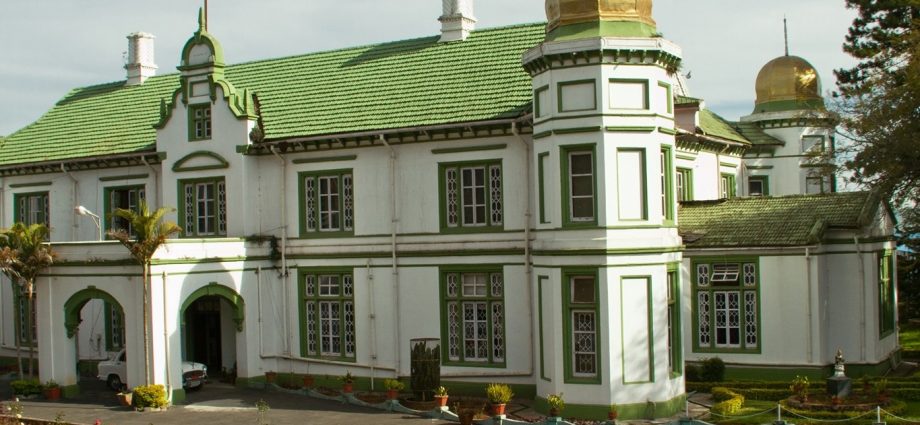Known as Nai kadi Aspathiri in Tamil (dog-bite Hospital), the Pasteur Institute of Southern India, Coonoor, was the venue of the first International Rabies Conference in 1952. It is here that the anti-rabies vaccine, which saves the lives of nearly 24,000 persons in a year is manufactured under the leadership of Dr. N. Veeraraghavan, the present Director of the Institute.
This Institute came into existence in 1906. The affairs of the Institute are administered by a Central Committee, composed partly of ex-officio and partly of elected members. Though it was originally started as an anti-rabies research centre, the Institute has traversed a long way in research into other virus diseases. The Institute has acquired international status and reputation on account of its success in reducing the incidence of paralysis, which is stated to be one of the after-effects of anti-rabies vaccine treatment.
Anti-rabic treatment was given to patients from all over South India at the Institute itself almost from its inception till 1922. As people found it very difficult for financial and other reasons to reach Coonoor for this treatment, it was felt safe to decentralise the treatment.. It has been computed that 2,93,611 patients have been treated at this Institute and its numerous subsidiary centres during the period of 48 years of its existence. A clinical laboratory was started as early as 1924 to which a biochemical section was added in 1948.
During the Second World War, the organisation of an extensive Blood Bank service in the province made it necessary to have plasma processing laboratories and the Pasteur Institute, Coonoor, opened in 1942 a section for this purpose. Besides its pioneering and leading role in research in rabies, the Institute has played a noteworthy part in public health work by serving as a depot for the distribution of prophylactic vaccines for cholera, assisting in the prompt diagnosis of contagious epidemics like cholera, plague, enteric fever, etc., and, at times, helping directly in prophylactic mass inoculation when such epidemics were threatening to get out of control.
A self-contained laboratory for the study of viruses other than that of rabies has been recognised by the W.H.O. as its Influenza Centre in India and work on influenza, vaccine and small-pox is now in progress at the laboratory. It may be interesting to note that the first strain of influenza virus in India was isolated here.
The establishment of a Pasteur Institute at Coonoor was rendered possible by the generosity of Mr. Henry Phipps, an American. Henry Phipp (1839–1930) grew up in poverty-stricken conditions in Pittsburgh, Pennsylvania, along with Andrew Carnegie (1835–1919) another immigrant to the US from the UK. Phipps’s close association with Carnegie led him to invest in 1861 in a steel-works operation – the Carnegie Company. In 1901, this operation became the US Steel upon sale to J. P. Morgan. At this point of time, Phipps retired, far wealthier than what he expected to achieve in his life. He spent the rest of his life donating generously to scientific efforts made both within the US and elsewhere. Phipps was of the conviction that those who acquired great wealth should return it for public good and create institutions dedicated for that purpose. Phipps came to India in 1903 presumably to witness the Delhi Durbar, planned by Lord Curzon. Phipps’s visit to India enabled him to perceive the pains of famine, which had swept India on a massive scale during 1899–1900. Phipps volunteered to support the science of agriculture in India, which he thought would enable educating the people of India towards achieving food security. He donated 1 lakh US dollars.
Phipps’s concerns were particularly stimulated by the number of people of lower social strata, who died of snake bites and wild-animal bites without appropriate medical attention and support. At that time, only the Indian Pasteur Institute at Kasauli in Himachal Pradesh existed. IPIK functioned from August 1900 treating people, who suffered dog bites and similar problems; However, the distance to Kasauli from southern India was so far that it could not be reached easily without several days of travel. Phipps contributed 50,000 US dollars to start a second Pasteur Hospital in south India.
The Pasteur Institute of Southern India started functioning in Coonoor from 6 April 1907. John Wolfran Cornwall of the Indian Medical Service was the first Director, who served for many years, Anderson H. McKendrick, also of the Indian Medical Service, was the Assistant Director, M. Kesava Pai served as the Assistant Surgeon and S. Ramasamy Aiyar was the Hospital Assistant. J. W. Cornwall, T. H. Gloster, K. R. K. lyengar, H. W. Mulligan, M. L. Ahuja and N. Veeraraghavan were its successive directors.
Nilgiri Documentation Centre

